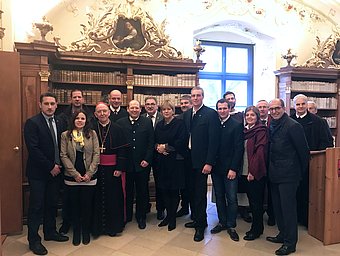The region has long grappled with the issue of correcting the distortion in tourist flows within the World Heritage area. How do you entice tourists away from the hotspots to the secret tips? A tourism strategy was therefore developed back in 2003 specifically for the area on the right-hand bank of the Danube in the Wachau.
Since then, this area has become increasingly networked with municipalities of the Dunkelsteinerwald sub-region and developed as far as Schallaburg into an important tourism destination in the immediate vicinity of the region. Contact has also recently intensified with the municipality of Furth near Göttweig, which lies almost entirely within the boundary of the Wachau World Heritage Site. A further stimulus could also come from the possible inclusion of the Roman heritage along the former northern border of the Roman Empire – the so-called “Limes” – on the list of UNESCO World Heritage Sites. If recognised, five specific locations centred on Mautern will be affected in the area of the existing Wachau World Heritage Site.
In recent years, apart from other important projects – such as focusing on projects involving art in the public space – two large projects for cultural tourism on the south bank of the Wachau have been implemented or prepared: the pilgrimage museum at Maria Langegg and Charterhouse Land in Aggsbach-Dorf. In both cases, however, it has not so far been possible to professionalise the underlying structures in accordance with the potential importance of the two locations.
With regard to both locations, two further projects should therefore be submitted in parallel with the present LEADER project with the support of the federal province’s department for culture. These projects are independent, both formally and in terms of their application, but their content is to be seen as related to the project in question. The objective of these projects is to put both locations at Maria Langegg and the Aggsbach-Dorf Charterhouse on a self-sufficient footing over the next three years.
However, an important prerequisite for achieving this objective involves bundling all of these strands into compelling and marketable cultural tourism products that support the projects at the individual locations. This was therefore identified as a central objective of the overall regional development of the Wachau World Heritage Site and the LEADER region Wachau-Dunkelsteinerwald. Starting from the two locations of Maria Langegg and Aggsbach-Dorf, the entire south bank of the Wachau should therefore be strategically networked in order to be prepared for future challenges as well as possible in the overall concept of the two possible World Heritage Sites of the future: the Wachau and the Danube Limes.
The project was presented in April 2017 at the joint season opening of the Pilgrimage Museum in Maria Langegg and the Aggsbach Charterhouse.
Discussed in the project selection committee: 20.5.2016
Project promoter: association Welterbegemeinden Wachau (World Heritage Municipalities Wachau)
Funding level: 70%
Project duration: 3 years
Supported by the federal province and the European Union (LEADER).


